This article was co-authored by Neal Blitz, DPM, FACFAS. Dr. Neal Blitz is a Podiatrist and Foot & Ankle Surgeon who runs private practices in New York City and in Beverly Hills, California. Dr. Blitz is “The Bunion King®” and is the creator of the Bunionplasty® Procedure (plastic surgery for bunions) which has revolutionized bunion surgery. He has over 17 years of podiatric experience and specializes in minimally invasive foot and ankle surgery. Dr. Blitz received his DPM from the New York College of Podiatric Medicine, then completed a residency focused on Elective & Reconstructive Foot & Ankle Surgery at the Swedish Medical Center, and was awarded an AO Trauma fellowship in Dresden, Germany, focused on trauma and reconstructive techniques. He is board certified in Foot Surgery and Reconstructive Rearfoot & Ankle Surgery and is also a Diplomate of the American Board of Foot & Ankle Surgery and a fellow of the American College of Foot & Ankle Surgeons (FACFAS).
There are 9 references cited in this article, which can be found at the bottom of the page.
This article has been viewed 86,473 times.
Experts say foot surgery may help you recover from a foot condition that doesn't respond to other treatments.[1] After your foot surgery, your recovery may take a while, but good self care might have you back on your feet before you know it. Research suggests that resting, elevating your foot, applying ice, keeping your surgical site clean, and taking pain relievers may help your recovery.[2] However, follow your doctor's instructions so your foot heals properly.
Steps
Setting Yourself Up for Recovery
-
1Stock up on food and other supplies. After you return home from the hospital, you will still need to stay off of your feet as much as possible. One way to make this easier on yourself is to stock up on anything you might need during your recovery. Some things to stock up on include:[3]
- food and beverages, such as convenient snacks and pre-prepped meals[4]
- toiletries
- books
- movies
- over-the counter medicines, such as a gentle laxative and prescription or over-the-counter pain medicine
-
2Place everything that you will need within reach. You will need to stay off of your feet as much as possible when you get home from surgery, so it is a good idea to get yourself set up ahead of time. Gather any items that you think you will want and place them near where you expect to spend most of your time as you recover at home, such as your bed or recliner.[5]
- Think about what items you will want to have nearby when you return home from surgery. For example, you might want to have a stack of books by your side, or the remote control to the TV, or a backscratcher.
Advertisement -
3Move furniture to more convenient locations. Fewer obstacles will also make getting around your house much easier, so you might also want to rearrange some of your furniture before you head to the hospital.[6]
- For example, you might consider moving a coffee table to the side of the room so that you do not have to walk around it. Or, you might consider moving your bed to the ground floor so that you don’t have to go up and down the stairs all of the time.
-
4Get a disabled placard for your car. When you are able to drive again, you will still want to stay off your feet as much as you can, so a disabled placard can be helpful. Apply for a disabled placard at your local DMV prior to your surgery. The placard will only be temporary, but it will ensure that you can park closer to entrances whenever you have to go somewhere.[7]
-
5Ask friends and family members for help. Even if you are well set up at home, you will still need to have some support from your friends and family while you recover. For example, you might need someone to pick up your mail, fill a prescription for you, or take you to a doctor’s appointment.[8]
- Make sure that you let your family members and friends know that you are having surgery and ask if one or more of them would be able to help you out now and then during your recovery.
Avoiding Infection and Complications
-
1Follow the doctor’s orders. Depending on the kind of foot surgery you underwent, your restrictions may be extreme or they may be relatively mild.
- Your doctor has a vested interest in seeing you get better, so adhere to the limitations he or she sets.
- The doctor may assign you specific tasks to aid in the healing of the surgery such as icing, elevating, or specific ways to clean the surgery site.
- Call your doctor if you have any questions or concerns about the instructions he or she provided.
-
2Take medication to manage your pain. The doctor will prescribe you medication to help you manage the pain you’ll experience after your foot surgery.
- Non-Opioid/non-narcotic pain relievers are often prescribed for small to medium levels of pain and are the safest form of prescription pain management. Common examples are ibuprofen, naproxen, and acetaminophen.
- Opioid pain relievers are prescribed for medium to severe pain. Follow the doctor’s instructions specifically when taking opioids as they can be extremely addictive. Examples of opioid painkillers include oxycodone and hydrocodone.
-
3Manage your swelling. It’s normal for the surgery site or even your entire foot to swell in the days following your surgery, but there are things that you can do to reduce the swelling.
- Use an ice pack or bag of ice to reduce inflammation. Be sure to place a towel between your foot and the ice and to check the skin under the ice regularly. Do not leave the ice in place for longer than ten minutes at a time.
- Do not place ice directly on top of the wound until it is completely healed.
- Elevate your foot to combat swelling. Try to keep it about six inches higher than your heart.[9]
-
4Take care of the surgical area. It’s important that you keep the area around the surgical incision clean, dry and protected.
- Do not remove the bandages until the doctor has given you permission to do so.
- Keep the bandages dry. Use a cast protector to keep your foot dry if you need to take a shower.[10] Ask your surgeon or podiatrist when it will be okay for you to wash the surgical site.
- Do not put any creams, lotions or anything else on the wound unless as directed to do so by the doctor.
-
5Combat common side effects of pain medication. It is not uncommon for patients to deal with constipation or other issues using the rest room for a few days after surgery.
- Make sure to stay hydrated to help your body stay regular.
- Eat high fiber foods to combat the constipation effect opioid pain killers have.
- Discuss the issue with your doctor if it continues for more than two days.
Recovering from Surgery
-
1Attend surgical follow up appointments. Your doctor will want to see you regularly in the months after your surgery to ensure you are healing correctly.
- Don’t skip your post-surgical appointments as they are important to ensure your foot is healing as planned.
- Bring up any questions or concerns you have regarding the progress of your foot to your doctor.
-
2Learn to get around. After your surgery, you may be on crutches, in a cast, or specialized footwear. Depending on your surgery, your mobility may be significantly limited.[11]
- Your doctor will tell you if you are ready for any amount of weight bearing.
- Be patient, rushing to place weight on your foot after surgery could re-injure you.
-
3Keep an eye out for issues. There are a number of possible complications that may result from foot surgery. If you notice symptoms of these issues arise, contact your doctor immediately.
- Infection can be a risk early in your recovery. If you notice redness and warm swelling around the surgery site or are experiencing a fever you may have an infection.
- Nerve damage is often not permanent, but you may experience numbness or tingling in the region surrounding the surgical incision. While it usually passes, you should discuss it with your doctor
Getting Back on Your Feet
-
1Take it slow. Your foot will need plenty of time to recover, be patient and follow the guidance of your doctor.
- If you experience pain doing something the doctor has authorized, you may want to contact him or her to make sure you are not hindering the healing process.[12]
- Rest when you’re tired. Healing requires a significant amount of rest, so if you find yourself exhausted, it’s in your best interest to take it easy for a while.
-
2Go to physical therapy. Your doctor may prescribe you physical therapy to help get you back on your feet.>
- Physical therapy can help you recover sooner and with more success.
- Physical therapists are trained to understand the limitations caused by your injury and devise exercises to help you regain your mobility.[13]
- Physical therapy can also help manage pain resulting from the surgery.
-
3Be careful while driving. You may have trouble getting back behind the wheel again after your surgery. You should discuss any limitations you may have with your doctor.[14]
- Do not drive while taking opioid pain killers as they can hinder your ability to drive in a similar way to alcohol.
- Be careful using the foot you had surgery on when pressing pedals. Your doctor will be able to tell you if your foot can support the weight of pressing a clutch or gas pedal.
-
4Get back to work safely. When you can return to work will be determined by the nature of your surgery and what you do for a living. Regardless of timeframe however, be careful not to hinder the healing process.
- Consider whether or not you will need to be on your feet for a significant portion of your day and whether your foot is healed sufficiently for that.
- Discuss your return to work with your doctor and your boss to ensure you’re all on the same page.
- See if your work can provide you with temporary accommodations for the limits you experience while recovering.
Expert Q&A
-
QuestionHow can I modify my living environment to make it easier to recover from foot surgery?
 Neal Blitz, DPM, FACFASDr. Neal Blitz is a Podiatrist and Foot & Ankle Surgeon who runs private practices in New York City and in Beverly Hills, California. Dr. Blitz is “The Bunion King®” and is the creator of the Bunionplasty® Procedure (plastic surgery for bunions) which has revolutionized bunion surgery. He has over 17 years of podiatric experience and specializes in minimally invasive foot and ankle surgery. Dr. Blitz received his DPM from the New York College of Podiatric Medicine, then completed a residency focused on Elective & Reconstructive Foot & Ankle Surgery at the Swedish Medical Center, and was awarded an AO Trauma fellowship in Dresden, Germany, focused on trauma and reconstructive techniques. He is board certified in Foot Surgery and Reconstructive Rearfoot & Ankle Surgery and is also a Diplomate of the American Board of Foot & Ankle Surgery and a fellow of the American College of Foot & Ankle Surgeons (FACFAS).
Neal Blitz, DPM, FACFASDr. Neal Blitz is a Podiatrist and Foot & Ankle Surgeon who runs private practices in New York City and in Beverly Hills, California. Dr. Blitz is “The Bunion King®” and is the creator of the Bunionplasty® Procedure (plastic surgery for bunions) which has revolutionized bunion surgery. He has over 17 years of podiatric experience and specializes in minimally invasive foot and ankle surgery. Dr. Blitz received his DPM from the New York College of Podiatric Medicine, then completed a residency focused on Elective & Reconstructive Foot & Ankle Surgery at the Swedish Medical Center, and was awarded an AO Trauma fellowship in Dresden, Germany, focused on trauma and reconstructive techniques. He is board certified in Foot Surgery and Reconstructive Rearfoot & Ankle Surgery and is also a Diplomate of the American Board of Foot & Ankle Surgery and a fellow of the American College of Foot & Ankle Surgeons (FACFAS).
Board Certified Podiatrist Make sure ahead of time that you're set up so you have the things you'll need near your bed and prep your meals in advance, as well. Once you get home, keep your bandages or cast dry, elevate your foot, and keep your pain medication nearby.
Make sure ahead of time that you're set up so you have the things you'll need near your bed and prep your meals in advance, as well. Once you get home, keep your bandages or cast dry, elevate your foot, and keep your pain medication nearby.
Warnings
- Call your doctor if you experience a fever of 101 degrees or more, redness or swelling on the foot, or excessive drainage from the incision. Also contact your doctor if the foot feels cold, numb and/or the toenails look bluish after the first 24 hours, which could be signs or a circulation problem.⧼thumbs_response⧽
- Antibiotics can reduce the effectiveness of birth control pills, so another method of birth control should also be used during the course of the medication.⧼thumbs_response⧽
References
- ↑ https://www.apma.org/surgery
- ↑ https://www.hopkinsmedicine.org/health/treatment-tests-and-therapies/bunion-surgery
- ↑ http://www.footeducation.com/frequently-asked-questions/preparing-for-foot-surgery-what-should-i-do/
- ↑ Neal Blitz, DPM, FACFAS. Board Certified Podiatrist. Expert Interview. 22 April 2020.
- ↑ Neal Blitz, DPM, FACFAS. Board Certified Podiatrist. Expert Interview. 22 April 2020.
- ↑ http://www.footeducation.com/frequently-asked-questions/preparing-for-foot-surgery-what-should-i-do/
- ↑ http://www.footeducation.com/frequently-asked-questions/preparing-for-foot-surgery-what-should-i-do/
- ↑ http://www.footeducation.com/frequently-asked-questions/preparing-for-foot-surgery-what-should-i-do/
- ↑ https://www.nlg.nhs.uk/content/uploads/2017/12/IFP-0971.pdf
- ↑ Neal Blitz, DPM, FACFAS. Board Certified Podiatrist. Expert Interview. 22 April 2020.
- ↑ https://www.youtube.com/watch?v=HgwepDw3svY
- ↑ https://www.orthoclinic.co.nz/patient-info/conditions-procedure/foot-ankle/recovery-after-foot-and-ankle-surgery/
- ↑ https://www.lvhn.org/wellness_resources/wellness_articles/healthy_living/10_ways_physical_therapy_can_help
- ↑ https://www.sciencedaily.com/releases/2010/12/101215141917.htm
About This Article
To recover from your foot surgery, try placing an ice pack wrapped in a thin towel on your foot for 10 minutes at a time to relieve your pain. You can also prop your foot up on some pillows to elevate it, which will reduce swelling. If your doctor prescribed pain medication, you can take that to ease your discomfort. As you recover, have someone place necessities, like food and beverages, near you so you don’t have to walk around too much. You can also place things like a TV or pile of books near your bed before the surgery so you can stay occupied as you heal. To learn how to recognize signs of infection in your foot, read more from our Medical co-author.
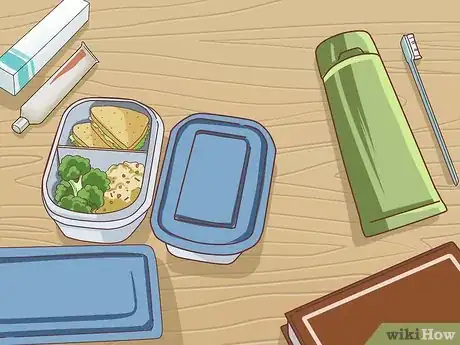



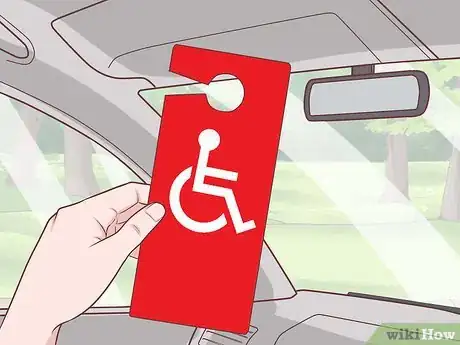



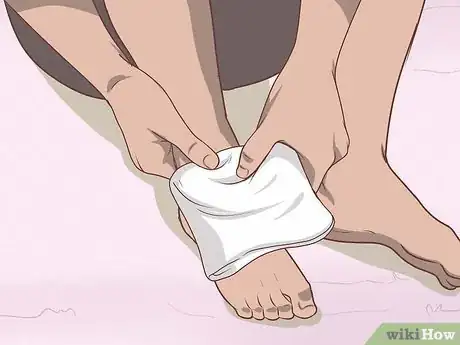
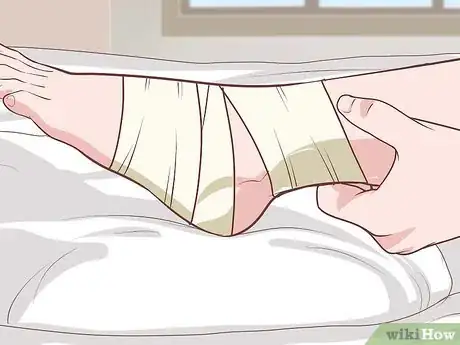

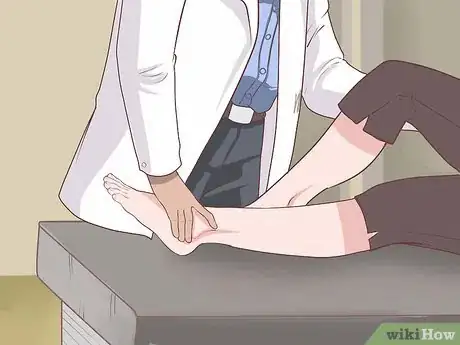
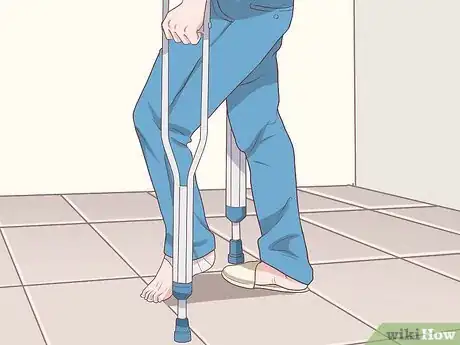
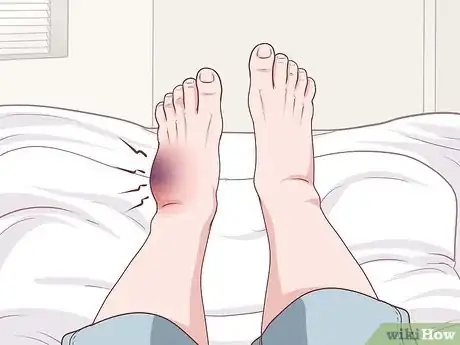
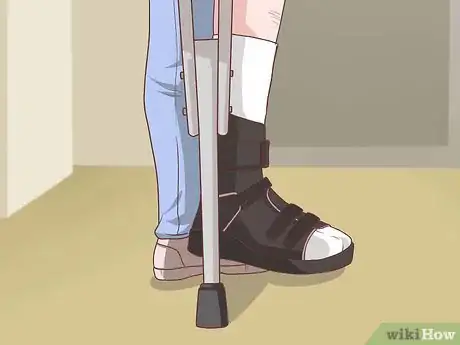

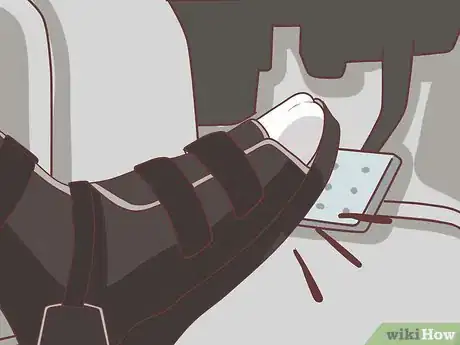

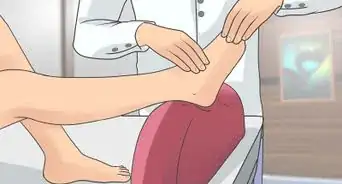








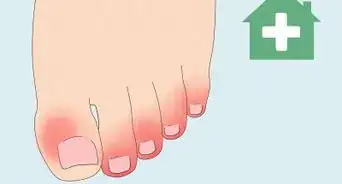


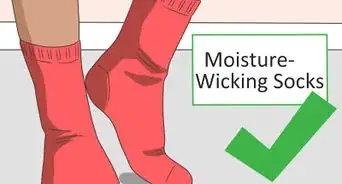
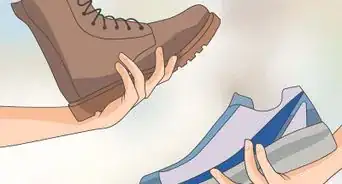






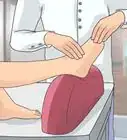






































Medical Disclaimer
The content of this article is not intended to be a substitute for professional medical advice, examination, diagnosis, or treatment. You should always contact your doctor or other qualified healthcare professional before starting, changing, or stopping any kind of health treatment.
Read More...